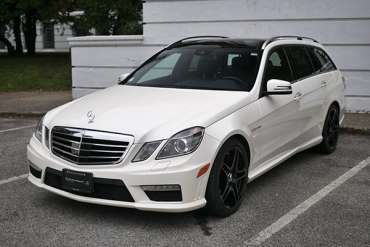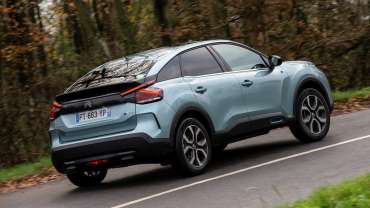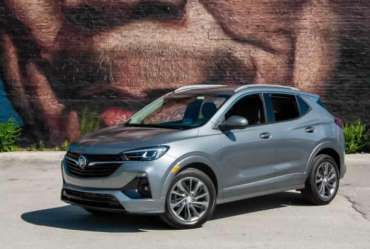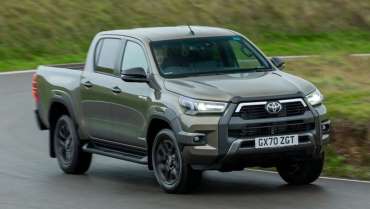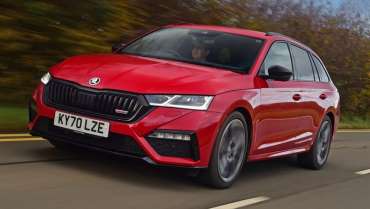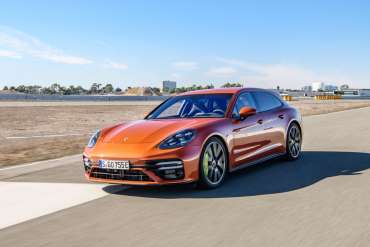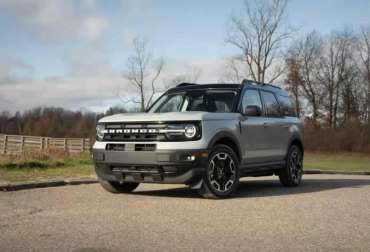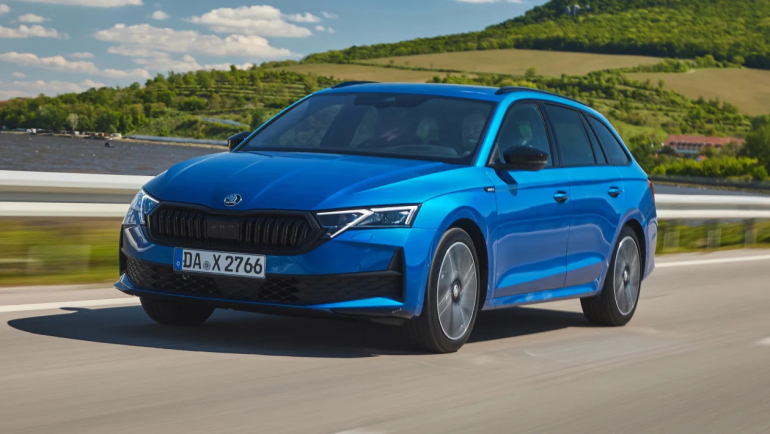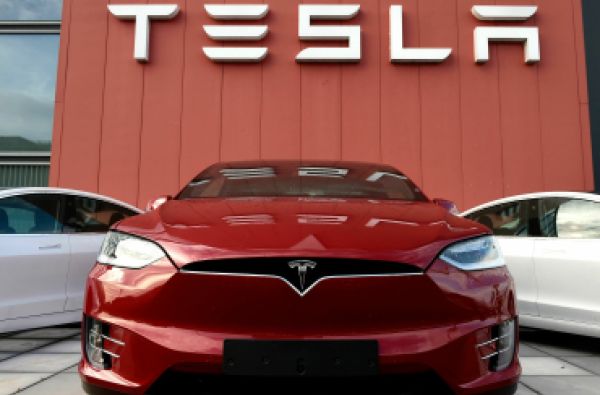
Worldcarblog.com
Mercedes-Benz E 63 AMG Wagon 550-Horsepower Could Be The One For You (photo + video)
Looking for a performance car that you can also use for the daily school run? This 2012 Mercedes-Benz E63 AMG Wagon could be the one for you.
We’re living in an era where SUVs have become the go-to vehicles for those looking for family cars, but performance-focused wagon/estate vehicles have something undeniably cool about them. This E63 AMG Wagon currently residing in Burnaby, British Columbia, Canada, looks to have been well maintained and will make its future owner stand out from the droves of SUVs that have seemingly taken over the streets.
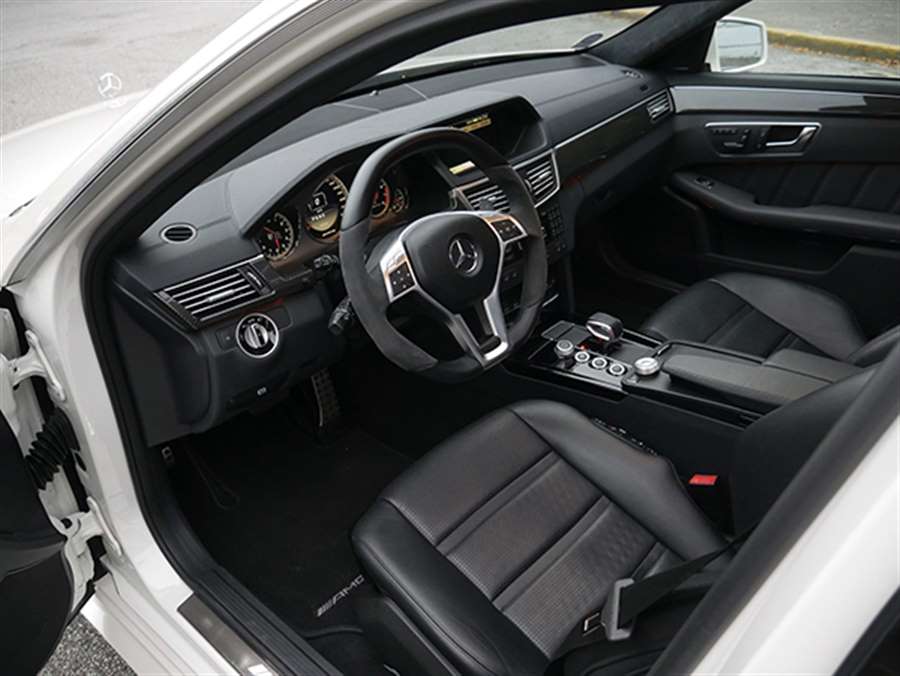
The Bring A Trailer ad lists that the car is finished in Diamond White Metallic and sits on factory 19-inch AMG wheels finished in black and wrapped in staggered-width Michelin Pilot Super Sport tires. Adding to the wagon’s desirability is the fact that it is equipped with the factory P30 Performance Package that boosts power to 550 horsepower and 590 lb-ft of torque routed to the rear wheels through a seven-speed automatic. It also includes a stiffened electronically adjustable sport suspension and an AMG-specific braking system with cross-drilled rotors and red calipers.
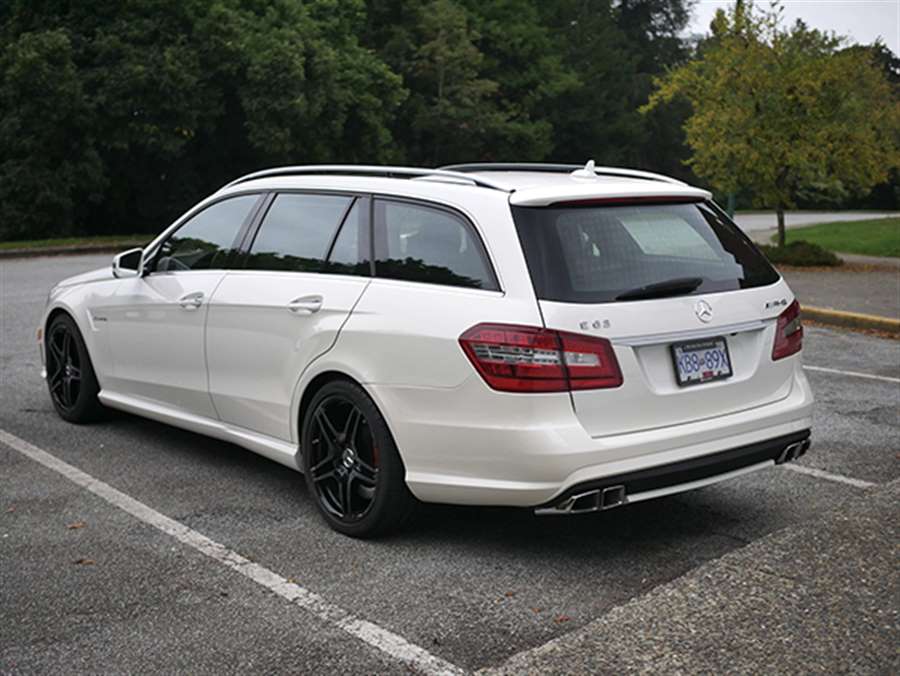
Inside, the Merc features black semi-aniline leather across the seats and door panels, various carbon fiber accents and a black Alcantara headliner. It also has powered, heated, and ventilated seats with memory functions, a panoramic moonroof, Blind Spot assist, lane tracking, and illuminated door sills.
This E63 AMG Wagon has been driven 103,000 km (~64,000 miles) and was serviced in October and fitted with new differential side cover seals, axle nuts, and front sway bar links. It is being sold with service records, factory literature, accessories, two Carfax reports and a British Columbia registration.
{vembed Y=uNOe5w60jw}
Source: mercedes-world.com
Citroen e-C4 electric car (2020) review: is comfort and individuality enough?
Citroen is hoping to make a splash in the electric car market by launching the battery-powered version of its new C4 hatchback concurrently with its ICE-engined counterpart. It’s a family hatchback that plays to Citroen’s re-ignited interest in its history and heritage as well as trying to arrest the inexorable march of the SUV by giving it some of the chunky attitude you’ll find in those cars.
The e-C4 is right on the money. It’s a family hatchback, but whereas the old C4 was forgettable and unsuccessful by basically being a less-good Ford Focus, the new one has been given individual styling, carrying the flame of individuality that’s returned to the marque since the launch of the C4 Cactus. Combine that with an electric drivetrain, which promises great refinement and efficiency, and you’re looking at the most zeitgeisty car to wear chevrons since the 1970 GS.
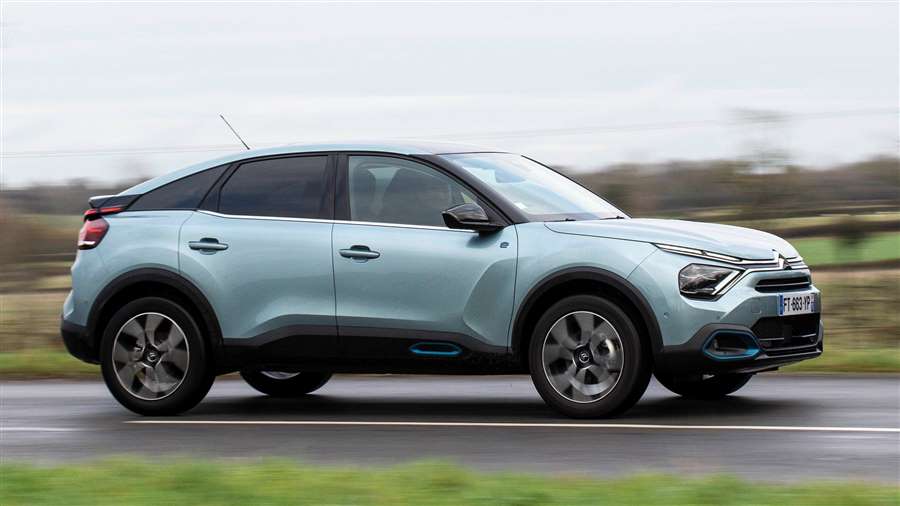
That’s certainly what Citroen is hoping. Marc Pinson (new C4 and e-C4 Designer) told us, ‘there are a lot of capable cars in this market segment, but they’re all very standardized. We wanted to give the C-hatch by giving it a flowing roof and coupé-like appearance. But we’ve added the SUV’s mass appeal.’
It sounds like an odd hybrid, but in the metal, it works really well. The slightly raised ride height and side cladding hint at SUV, but the six-light fastback profile are very much a continuation of the Citroen GS and BX. It’s a good-looking car, as you’d expect from the man who brought us the Citroen C6, dripping with interesting details, especially through the rear spoiler that splits its tailgate glass and the striking use of LED lighting.
That’s the design, what about the strategy?
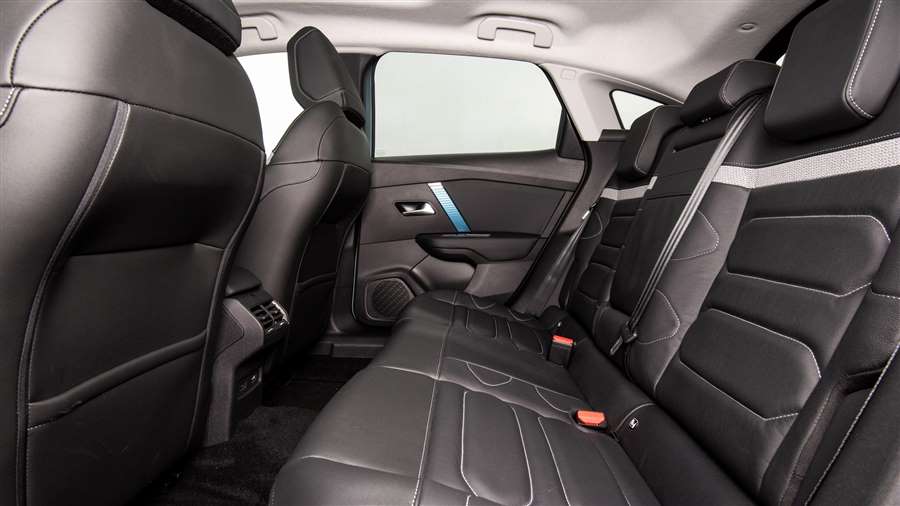
The first thing that will strike you is that aside from a few detail trim differences, the all-electric e-C4 and petrol and diesel C4s look identical. Yes, the e-C4 gets a light sprinkling of blue details, but on the road, it takes an expert eye to tell the difference between the two. This makes the e-C4 and ideal choice for those looking to move to electric without shouting about it.
It’s the same strategy employed by Citroen's PSA sister brands, Peugeot and Vauxhall. The Peugeot e-208, e-2008, Corsa-e and Mokka-e are outwardly identical to their ICE-engined cousins, a great advert for the adaptability of PSA’s EMP2 platform which allows for electric and ICE cars to be built on the same production line with great tech commonality. It also means that Citroen is unique for now in offering its mid-sized family hatchback in petrol, diesel and electric forms from launch.
The e-C4 doesn't actually have many direct rivals right now, but expect that to change rapidly. Right now, the Nissan Leaf, Volkswagen ID.3 are the main electric family hatchback choices for now. Widen your search to small SUVs, and you could include the Peugeot e-2008 or even the MG ZS EV. Does this lack of opposition give Citroen an open goal to aim for?
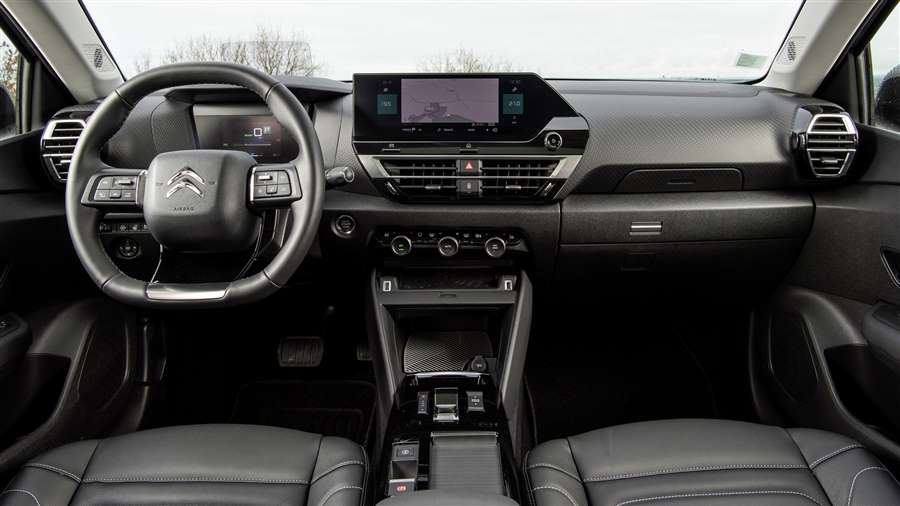
What's it like inside?
The e-C4 takes an interesting step forward for Citroen. It gets a development of C5 Aircross's all-digital dash and infotainment set-up – which means extensive use of the touchscreen for many of the car's functions – but it’s integrated more effectively and looks very stylish. The screen is big, displays crisply and sits proud of the dashboard to become a styling feature in its own right, and operates as well as a touchscreen can thanks to having a shelf below for you to rest your hand on while on the move. The addition of a row of physical buttons to operate the HVAC controls beneath is also a welcome development over Citroens of old.
As a family car, it works well, as there are plenty of nooks and crannies in the centre console, as well as easily-accessible USB sockets and storage bins between the seats, too. Citroen also points out a range of accessories and options that includes a wireless phone charger, head-up display and tablet stands for the front passenger.
As you’d expect, the latest version of Citroen's Advanced Comfort seats are successful in meeting their brief. They're well-sized and generously padded with high-density foam that incorporates a thick 15mm layer of textured foam on the surface. They manage to be both soft and inviting and also supportive on the move – an ideal set-up.
Rear seat room is impressive, with plenty of knee and headroom – impressive considering its sloping roofline. It has a 380-litre boot area with the seats up, which rivals that of the latest Volkswagen Golf, with a twin-level boot floor. That split boot floor means that with the panel in its uppermost position, there is no lip to get your heavy objects over.
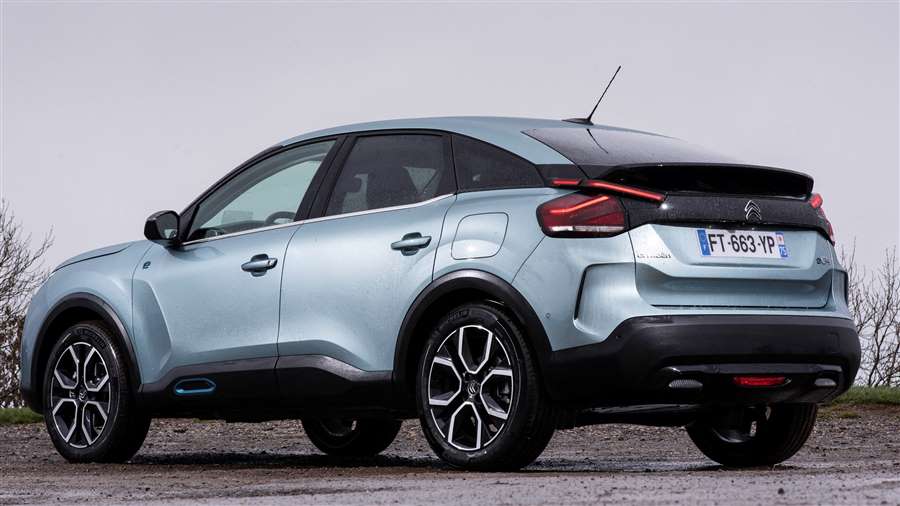
What's it like to drive?
If Citroen was looking to extract the maximum serenity and refinement from its latest family car, then it has succeeded admirably. The light, airy interior and muted interior colours set the mood even before the off. But get in and make yourself comfortable in its squidgy driver’s seat, and setting off like a bat out of hell will be the last thing on your mind. This is all about wafting and kicking back.
Take off and performance, in Eco mode especially, is lacking the impressive surge you get with many electric cars, but it’s smooth and linear in its delivery, feeling effortless, and it gets up to cruising speed quickly enough. Performance is adequate in ICE terms, but is left behind by many of its EV rivals – 0-62mph comes up in 9.7 seconds and its maximum speed is 93mph.
Motorway refinement is impressive, with low levels of wind and road noise, while insulation from surface irregularities, such as potholes and broken tarmac, is also very effective. For all those Citroen traditionalists who decry the end of the Hydropenumatic set-up of old – the new way of thinking might not be as level and unflustered at speed, but it delivers similar levels of overall comfort without the compromises.
In isolation, ride, handling and roadholding are as you’d expect for a marque that plays up its heritage for building smooth-riding cars. The steering is light and lacking in feel, but accurate and well-geared, while the brakes are better than most EVs in terms of pedal feel, modulation and steering feel. At speed, it feels like it flattens bumps rather than ride them, and in corners it also feels a little unwieldy. It’s not easy to quantify, as understeer is well contained and bodyroll is all present and correct, but controlled effectively.
The relative lack of enthusiasm comes from us driving it back-to-back with the ICE-engined C4, which feels so much lighter on its feet and more effectively damped. Compare it with a Nissan Leaf instead, and the e-C4 is a standard-setter in body control and comfort.
What about charging and range?
The Citroen e-C4 has a 134bhp electric motor and 50kWh battery. That puts it behind the Nissan Leaf, Hyundai Kona Electric and top-end Volkswagen ID.3s, and although its official WLTP range of 217 miles looks good for a supermini, it’s a little on the skinny side for a larger family car these days.
We have some doubts about the real-world range, too, with the DTE range falling significantly faster than miles covered – a niggle shared with the Peugeot e-2008 – on our three-hour drive. We’ll wait until we’ve given it the full review treatment, though, before making a definitive judgment. However, if you’re going to be travelling distance and relying on public chargers on a regular basis, you might want to wait until real-world user data comes in before ordering one.
The good news is that the e-C4 supports up to 100kW rapid charging, allowing 80% of the battery to be charged in 30 minutes at a decent charging station. For home charging you get a Type 2 cable for free, allowing a regular 7.4kW charger to reach a 100% charge in seven hours and 30 minutes. From launch, all customers will be offered a Pod Point Solo Smart Charger thrown in, too.
What's available and when?
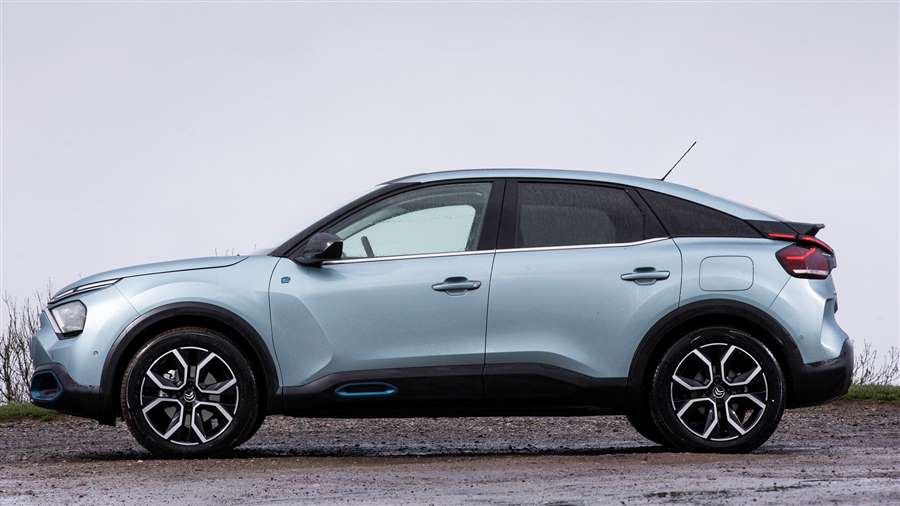
There are four e-C4 models to choose from – Sense, Sense Plus, Shine and Shine Plus. All models get LED headlights, a 10.0-inch touchscreen, Automomous Emergency Braking (AEB), Lane Keeping Assist and Driver Attention Alert. You can get a tablet computer holder for front seat passengers, LED interior lighting, a rear parking camera, and adaptive cruise control further up the range. A premium hi-fi system featuring uprated speakers and the addition of a subwoofer make it into the Shine Plus.
The e-C4 is available to order now with deliveries to UK customers commencing in February 2021.
Verdict
The Citroen e-C4 is a likeable electric car that goes a long way to broadening choice for those wanting to make the plunge into an EV. It’s a distinctive-looking car that we love for its single-minded pursuit of maximising comfort, and eschewing the increasingly tiresome roadholding bias prevalent in a generation of Nurburgring-honed family cars.
The PSA strategy of offering EVs and ICE cars that look the same is also interesting for those who want to go electric without making a fuss. Right now, the e-C4’s main rivals are the Nissan Leaf, which is ageing in several areas and the excellent Volkswagen ID.3, which is beginning to feel like a bit of a gamechanger. Both are bespoke EVs, designed as such from the ground up, and offer better range and efficiency. The e-C4 is more comfortable than both.
Citroen hopes that the new e-C4 will appeal to a wider range of buyers as a more-rounded product that majors on comfort and refinement. It looks well priced and comes with an impressive amount of equipment, as well as a free home charger. As it stands, we reckon Citroen has struck the right note with the e-C4, and doubts about battery range aside, it’s an impressive new addition to the EV market.
Source: carmagazine.co.uk
2020 Buick Encore GX Review: Premium Pablum
The verdict: The new 2020 Buick Encore GX is a small, premium-priced SUV that feels neither premium nor exciting, with bland materials and a meek powertrain. It gets the job done, though — assuming “the job” is mostly “being a little bigger than an Encore” (which remains in Buick’s lineup).
Versus the competition: Buick’s entry in the seemingly never-ending stream of small SUVs is outshined by others in the class that offer nicer interiors or far better driving experiences — or sometimes both — for thousands of dollars less.
The Encore GX is Buick’s latest and second-smallest SUV, bigger only than the Encore, which was one of the first subcompact SUVs on the market and the brand’s bestseller. The Encore is smaller than both the Envision and Enclave and offers buyers a choice of front- or all-wheel drive and two turbocharged three-cylinder engines. The Encore GX with FWD has a continuously variable automatic transmission, while AWD versions get a more traditional nine-speed automatic. Trim levels, in ascending order, are Preferred, Select and Essence.
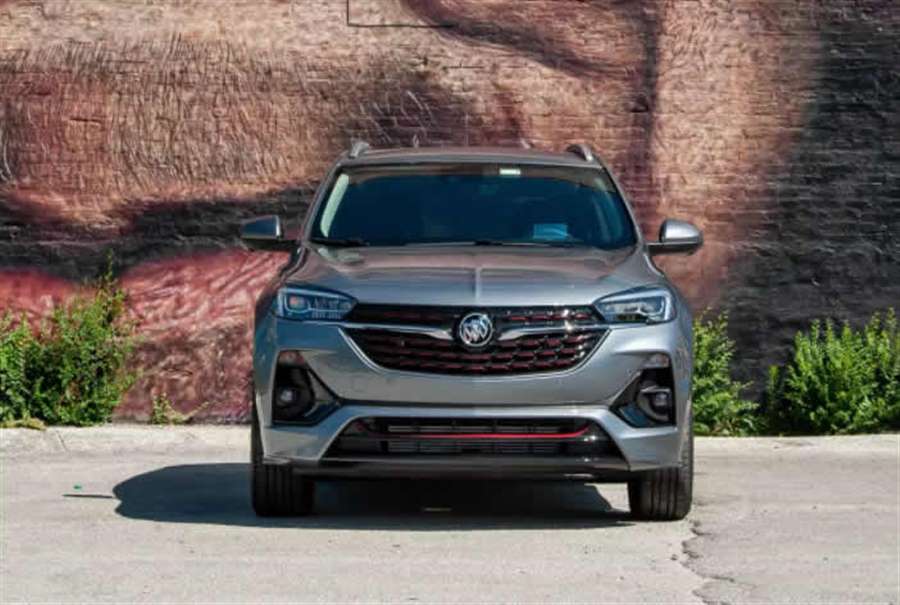
My test vehicle was a FWD Encore GX in the top Essence trim. It had the optional turbo 1.3-liter engine and Buick’s Sport Touring, Convenience and Advanced Technology packages. The Sport Touring package ($650) adds a dash of spice, with body-colored side molding, “sport” front and rear bumpers, a unique grille with red accents and package-specific 18-inch wheels (different from the 18s every Encore GX gets standard). The advanced technology in the Advanced Technology Package ($1,790) includes a 360-degree camera system, a head-up display and built-in navigation. The Convenience Package ($770) adds automatic parking assist, a rearview camera mirror and rain-sensing windshield wipers. Our test vehicle’s total price, including a $995 destination fee, was $34,115.
That’s a fair amount of money for a small SUV that, at its best, evoked feelings of “This car sure is … adequate.” The Encore GX competes against other small SUVs like the Mazda CX-30, our recent SUV-comparison-test-winning Kia Seltos, and a vehicle with which it shares its platform, the Chevrolet Trailblazer.
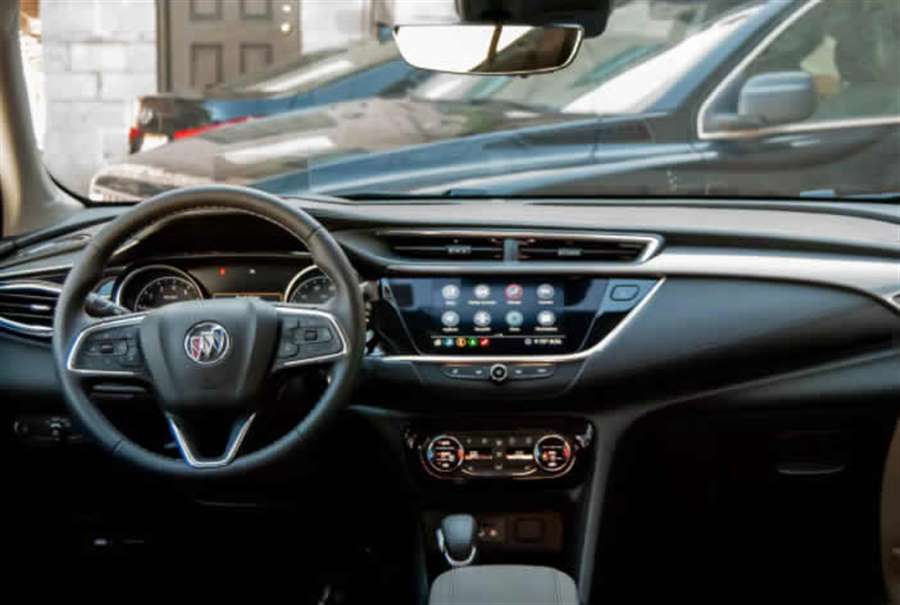
Even with its more powerful optional engine, the Encore GX still has only 155 horsepower, which isn’t many ponies to call upon when the accelerator is pressed. It’s never going to be a quick car, but that’s almost certainly fine for those considering buying one. It’s quiet on the highway and remains fairly composed at higher speeds despite its small size. Passing maneuvers are a bit of a stretch, but once the Encore GX wakes up from its highway hypnosis, it does what you want.
Around town, particularly in the model I drove, with front-wheel drive and a continuously variable transmission, you really need to stand on the gas to keep up with aggressive city traffic. This caused one of my least favorite behaviors in the GX: torque steer. There was so much torque steer — a phenomenon in which engine power applied to the front wheels causes them to pull to one side or the other. The wheel would practically jump out of my hands trying to turn to one side under strong acceleration, which would be more forgivable if the Encore GX were impressively quick or at all fun to drive. As it is, it’s just aggravating; I’d recommend choosing an AWD model for this reason alone. There also aren’t any available driving modes to increase throttle or transmission response or to tighten up the suspension or steering.
Steering itself feels numb and vague; it doesn’t communicate where the nose and wheels are pointed at any given moment. There’s so much play in the steering wheel before it actually turns the wheels, it reminded me of an early-2000s Mercury Grand Marquis — or the time I was 12 and got to steer a DUKW during a Boston Duck Tour in the Charles River.
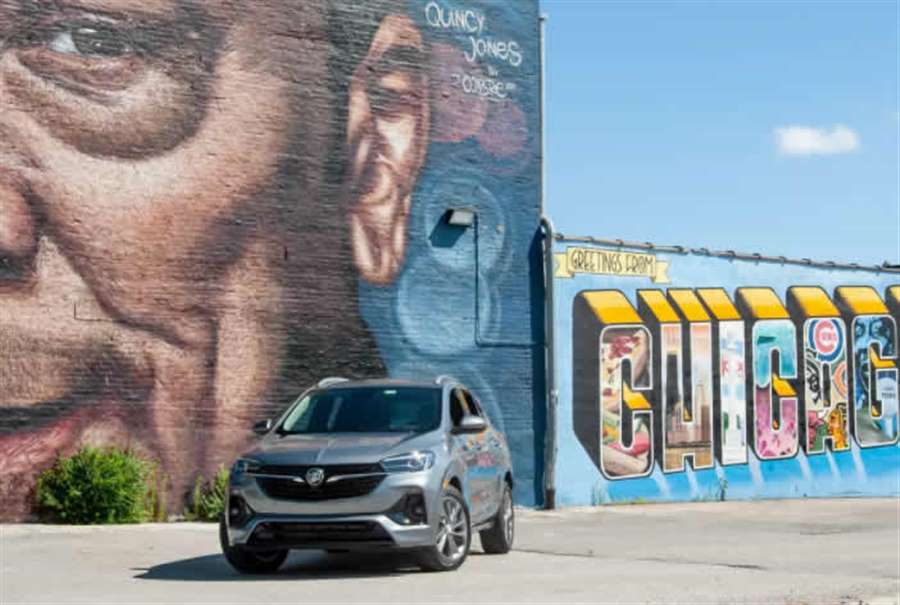
Choppy pavement — of which there’s plenty around Chicago — unsettles the Encore GX more than other small SUVs I’ve driven over the same roads. There was also more body roll in turns than I expected. The SUV feels like a much bigger vehicle when you’re driving it until a modern RAV4 pulls up alongside and dwarfs you, which may appeal to buyers looking for a big car feel without an actual big car.
Or big-car fuel economy, for that matter. Our FWD-and-turbo 1.3-liter engine combo is the most efficient of the Encore GX range, with EPA-estimated gas mileage of 30/32/31 mpg city/highway/combined. With AWD, those ratings dip to 26/29/28 mpg. The FWD turbo 1.2-liter GX is rated 26/30/28 mpg. The Mazda CX-30’s much more engaging driving experience is also less fuel-efficient; FWD versions top out at 25/33/28 mpg and AWD SUVs at 25/32/27 mpg.
One much-appreciated feature on the Encore GX was the ability to deactivate the engine’s automatic stop-start feature. GM had not previously allowed owners to turn the feature off, and while reducing engine idling is good for the environment, being stuck in a traffic jam on a sweltering summer day with an engine that refuses to run while stopped — significantly reducing the air conditioning’s effectiveness — has made me yearn for at least the option to deactivate. It seems GM finally trusts its owners in this regard.
Despite the Encore GX’s high price, its interior doesn’t have a premium or even fun feel. The monotone interior you see above has the materials quality you’d expect in an SUV priced a few thousand dollars less. Truly, the only premium or near-premium interior in this class belongs to the Mazda CX-30, but at least other contenders in the segment don’t position themselves as upmarket choices the way Buick does.
That said, the Encore GX’s features do have more of a premium feel. It has an available head-up display, rearview camera mirror, 360-degree camera system and available self-parking feature. But those features aren’t tangible and aren’t always in use, whereas Encore GX drivers are always sitting on low-quality leather (in the Essence) or touching parts of the interior that could use more padding. Even the head-up display is an old-school flip-up version that sounded like a cassette tape being ejected whenever it rose into position or folded down when the car was turned off. The HUD is at least visible when wearing polarized sunglasses, so kudos to Buick for that.
Buick’s standard 8-inch touchscreen infotainment system is adequate, with standard Apple CarPlay and Android Auto (2021 models also get standard wireless compatibility). It has modern enough graphics and a straightforward user interface. For all the ways the CX-30 tops the Buick in premium feel, Buick has Mazda beaten here.
Visibility is fine, with no major blind spots, and the optional 360-degree camera system helps out in tight spots. I was comfortable in the backseat, with decent headroom and legroom. Buick estimates cargo volume at 23.5 cubic feet with the backseat upright and 50.2 cubic feet with it folded down. The smaller Encore has 18.8 and 48.4 cubic feet, respectively. A trip with four adults — or even two parents and two kids — might be pushing it, but two adults plus pets will be fine. Based on manufacturer specifications, the CX-30 has less cargo volume, while the Seltos and Trailblazer have more.
Standard safety features on the Encore GX include forward collision warning with automatic emergency braking and pedestrian detection, lane departure warning, lane keep assist and automatic high beams. That’s a big deal for a GM product; traditionally, some or all of these features have been higher-cost options. Some features are still optional, including adaptive cruise control, blind spot warning with rear cross-traffic alert, a 360-degree camera system, a head-up display, a rearview camera mirror and an automatic parking feature.
The 360-degree camera system was very useful and I’ve already praised the head-up display’s visibility with polarized sunglasses, but the Buick’s other features felt more nice-to-have than necessary. I’ve never been a huge fan of rearview-mirror camera displays, as they always disorient me a little by providing a slightly different view than what my eyes expect. And automatic parking assist would be more useful if the Encore GX weren’t already so small and easy to park. I’ve used similar features on larger vehicles to help determine if an unfamiliar car would fit in a particular spot, but the answer to that question in the Encore GX is almost always “yes.”
The Insurance Institute for Highway Safety hasn’t yet crash-tested the Encore GX. In this regard, it should not be mistaken for the other Encore, which has an entirely different platform and, thus, different crash characteristics. Once the Encore GX is tested, the results will appear here, with other small SUVs. The National Highway Traffic Safety Administration gave the Encore GX a four-star overall safety rating, out of a possible five stars. In our Car Seat Check of the Encore GX, the small SUV earned mixed scores
Is the Encore GX a Smart Buy?
It’s hard to say if the Encore GX is a smart buy. On the one hand, with sticker prices at the top of the line approaching — or even exceeding — $35,000, the model is hard to recommend. But will buyers ever need to pay even close to sticker price?
I prefer the Chevrolet Trailblazer to the Encore GX both in terms of interior quality and driving experience, and the Mazda CX-30 far surpasses the Encore GX in everything but infotainment systems. If, however, you care about buying a car from a domestic brand that’s ostensibly nicer than Chevrolet — even if the car itself is assembled in South Korea — and if you can get a decent deal on an Encore GX, it will likely meet your needs.
Source: cars.com
New Toyota Hilux 2020 review
The Toyota Hilux pick-up has been updated for 2021, and now boasts a punchy 2.8-litre diesel engine
Verdict
The Toyota Hilux has always been seen as a practical, no-nonsense work vehicle, and the latest updates mean it should be on any premium pick-up truck buyer's shortlist. The new engine packs a punch without impacting running costs too severely, while the Invincible X model has the looks and kit to appeal to buyers that need an upmarket work vehicle that also can carry a family in comfort - all while offering more off-road ability than most buyers could possibly need.
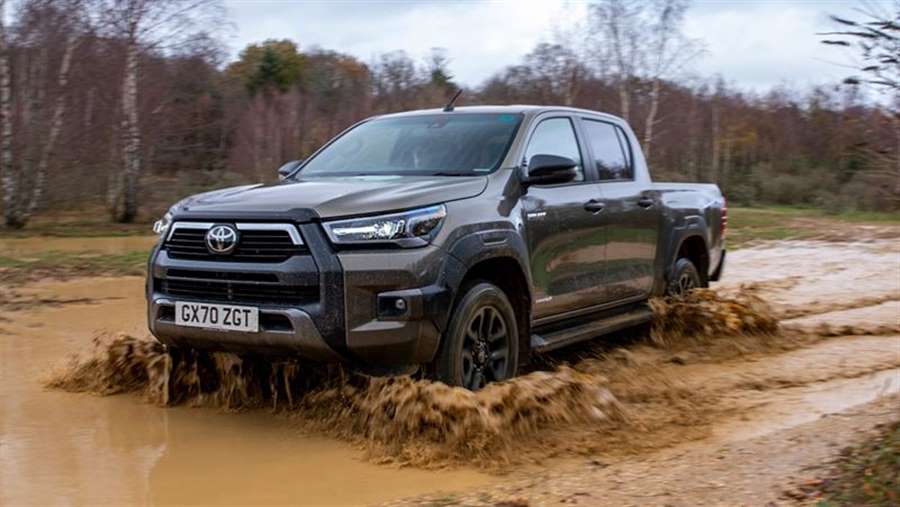
Of all the pick-up trucks for sale in the UK, the Toyota Hilux is the one with a reputation that precedes it. It's become a beacon for Toyota's reputation for reliability and durability, and is found in all four corners of the globe. However, when it comes to the 'lifestyle' angle of the UK's one-tonne pick-up class, it has never quite hit the mark.
One thing that's held the Hilux back is a relative lack of power. Unlike rivals, Toyota has never offered the Hilux in the UK with a high-power engine, but that's all change for the 2021 model year, with the arrival of a new 2.8-litre diesel packing 201bhp. That means the Hilux is now second only to the Ford Ranger in the four-cylinder pick-up pack for power. It's available with six-speed manual or auto gearboxes, while selectable four-wheel drive and low-range gears make the most of that power and the 500Nm of torque on offer. An automatic limited-slip diff in 2WD mode also helps with traction when running in the Hilux's most efficient setting.
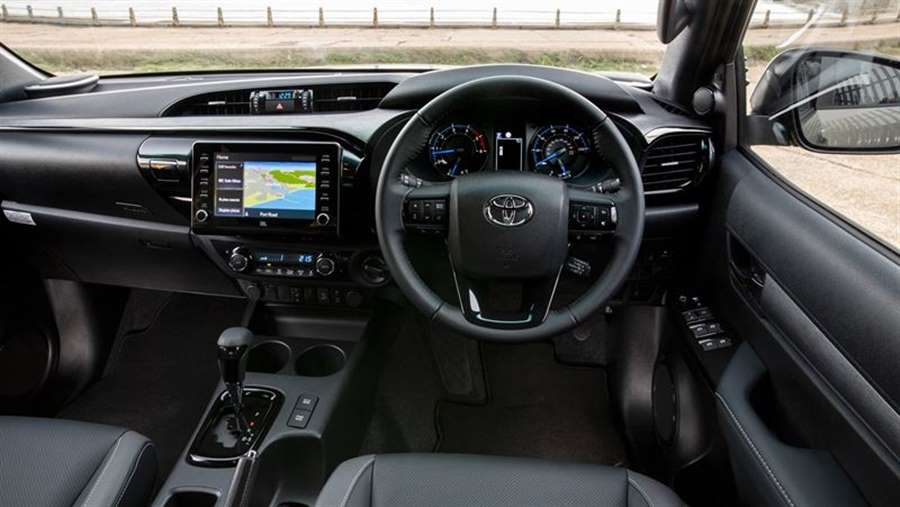
Other revisions under the skin include suspension that has been tuned to deliver a smoother ride when unladen, helping to reduce the amount of bounce that one-tonne pick-ups often suffer from when there's no payload in the back. Also, the power steering now offers variable assistance depending on which drive mode is selected, with extra assistance given in low-range mode for off-road driving.
On the road, the Hilux has definitely been improved. The engine can still get noisy under acceleration – especially if you use the whole rev range – but the extra power means you don't spend as much time on the throttle as before. That automatic LSD function helps get the power to the road in 2WD mode with minimal fuss, too. When you do back off, the cabin is quiet and refined, with next to no wind or tyre noise. It's a real step change for the Hilux, and means this truck now offers the kind of hushed cruising that you'd get from an SUV.
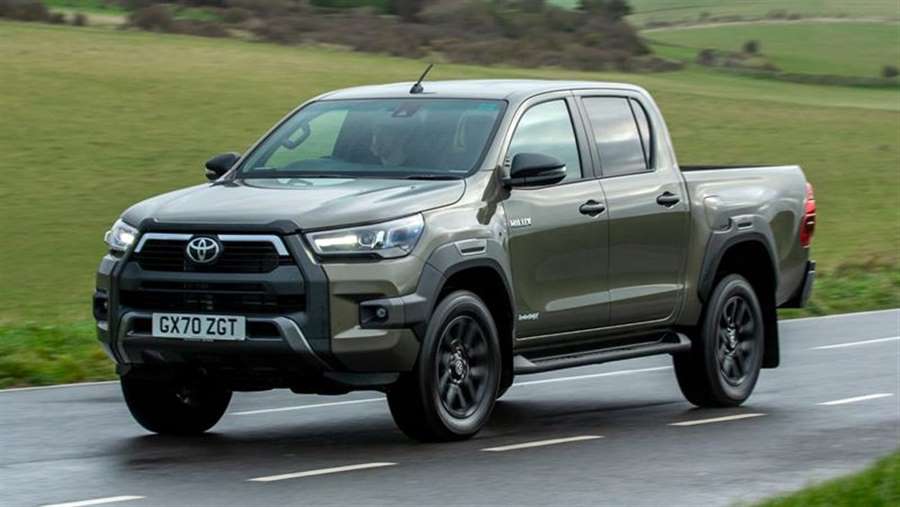
However, while the revised suspension is designed to help eliminate 'bounce', the Hilux isn't automatically a smoother ride than a Ford Ranger. There's a distinct patter sensation when running over bumps, with the front and rear wheels delivering a similar amount of movement back to the cab. In comparison, a Ranger's front suspension will smooth out a bump, but with the rear having a bit more of a jolt to it. Overall it means that the Ranger feels like it offers a better compromise than the Hilux when unladen. Still, the Toyota is a better performer than the Mitsubishi L200, while the leaf spring set-up is more composed than the multilink system found on the Nissan Navara.
What really impresses is that Toyota has managed to improve the Hilux on tarmac without compromising its off-road talents. Even on standard road-biased tyres, the Hilux offers a level of ability in the rough that will meet the demands of almost all drivers. Simply switch to the low-range 4WD setting, and a suite of electronic aids will help you battle through the rough stuff. Hill descent control, a reprogrammed stability control system, improved throttle response and a lower engine idle speed mean the Hilux is better suited to off-road driving than ever.
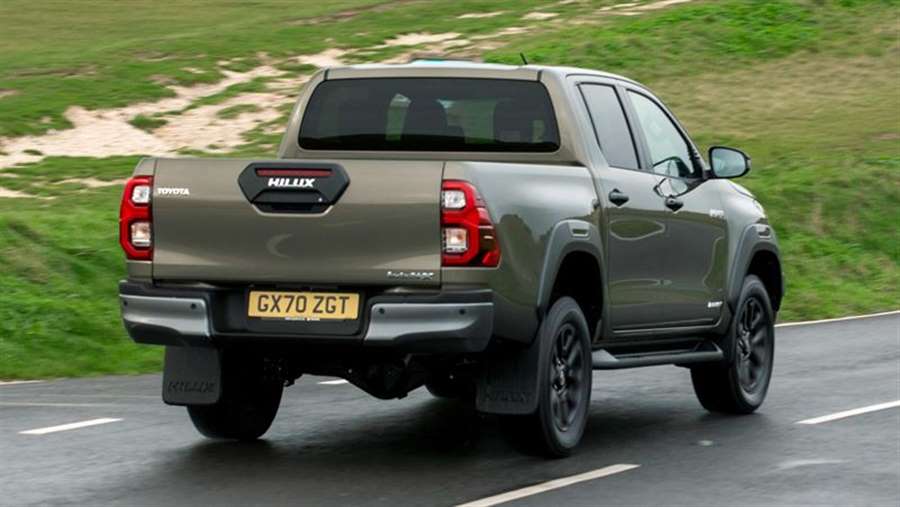
Go for the top-spec Invincible X model, and the 201bhp diesel is standard (the 2.8 is optional in Invincible trim, while lower-spec models come with the existing 148bhp 2.4-litre diesel), and there's a long list of extras, too. The X gets a unique exterior look, with minimal chrome trim, black cladding for the grille, wheelarches and tailgate, plus exclusive 18-inch wheels and black chrome housings for the standard LED headlights.
Inside, a JBL audio system delivers excellent sound clarity - although the dashtop speakers do reflect slightly in the windscreen - and sat-nav is included with the infotainment, although the new eight-inch touchscreen also introduces Apple CarPlay and Android Auto to the Hilux if that's your preference. There are heated leather seats up front, ambient lighting throughout the cabin and everything feels well built. Maybe it's not quite as plush as an SUV, but you certainly don't feel short-changed.
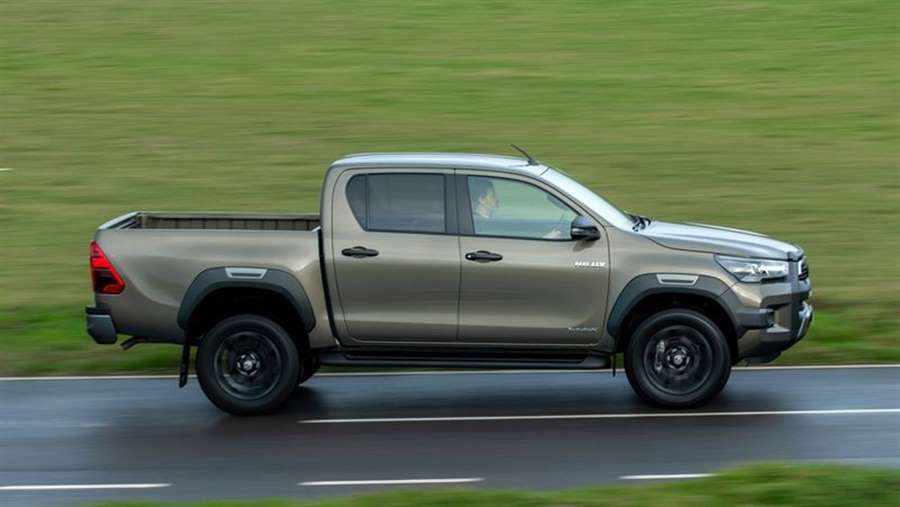
Competitive finance rates help with that, too. Thanks to strong residuals, the Hilux is available with competitive finance rates. Add in Toyota's five year/100,000-mile warranty if something unexpected happens, and this is a pick-up that makes a strong case for itself.
SOurce: autoexpress.co.uk
Skoda Octavia vRS Estate review
“The Skoda Octavia vRS Estate offers great performance, technology, space and choice”
The vRS version of the Skoda Octavia hatchback might be swamped with hot hatch rivals, but the vRS estate occupies a less competitive area of the market. Its main rival for the moment is the Ford Focus ST Estate, while the Cupra Leon ST and Volkswagen Golf GTD Estate will aim to tempt you to a different part of the VW Group empire when they arrive.
So there’s not too much choice for a fast estate of this size, but settle on the Skoda and you’ve got some decisions to make. Like before, you can pick from hatchback or estate body styles, petrol or diesel engines, manual or automatic gearboxes, and whether you want the power going to just the front wheels or to all four. Now there’s yet another option, with a new plug-in hybrid powertrain promising pace and big economy gains.
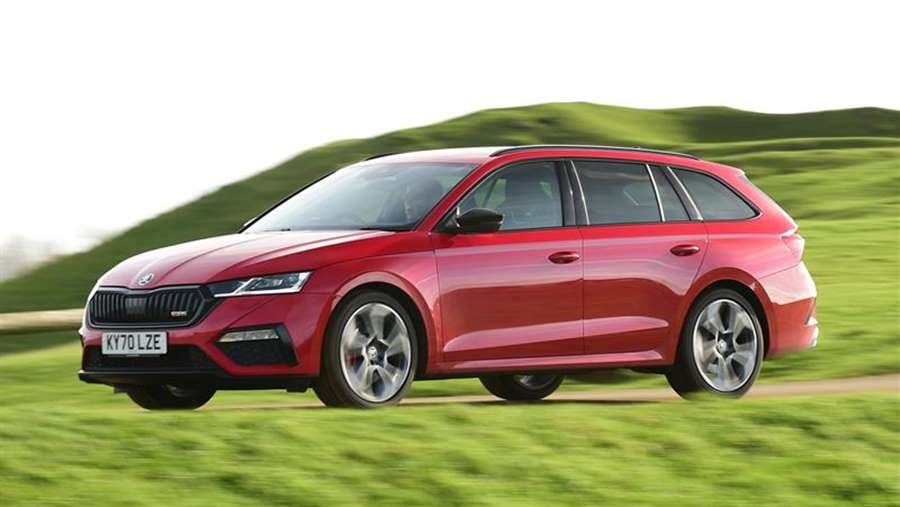
The low CO2 emissions makes it seem like a good option on paper but not all of the Skoda Octavia vRS iV estate’s quirks are appealing. The battery means it has the same ride height as the standard Octavia, so its stance is less sporty, sitting higher than the petrol and diesel vRS. The battery is heavy too, adding around 250kg and blunting the car’s performance somewhat, which results in a 0-62mph time of 7.3 seconds. The positioning of the battery under the boot floor also means the PHEV loses 150 litres of boot space compared with the regular Octavia vRS estate.
The petrol and diesel versions, meanwhile, follow the same tasty recipe as before, passed down through the generations and honed over time. Shared with the new Volkswagen Golf GTI and GTD, the Octavia vRS is offered with 242bhp petrol and 197bhp 2.0-litre diesel engines. Accelerating from 0-62mph takes 6.7 seconds in the petrol and we expect a figure of around 7.4 seconds for the more frugal diesel, which is slated to arrive in the first quarter of 2021 with the option of four-wheel drive.
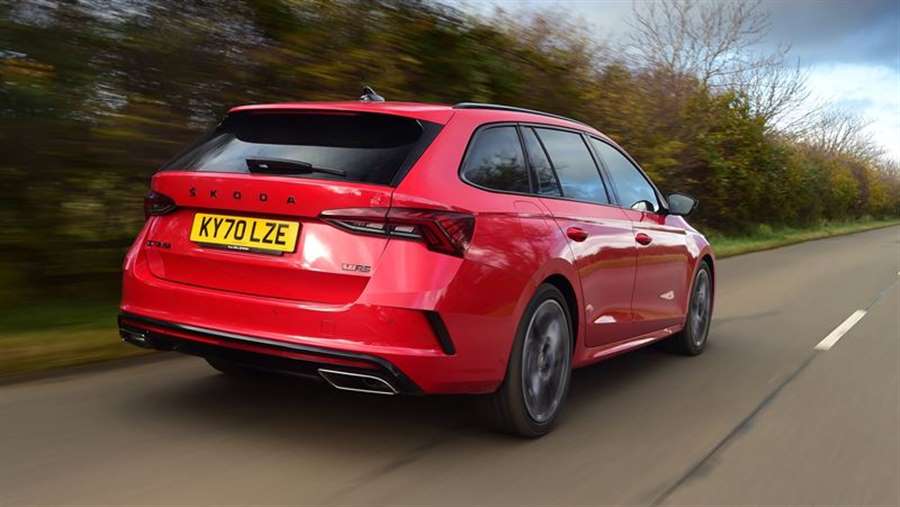
Whichever you decide on, all versions get pumped-up styling - like the bigger wheels, boot spoiler and black trim pieces - and a slightly racier interior than a standard Octavia. It’s quite a subtle upgrade, despite a flat-bottomed steering wheel, red stitching, more heavily bolstered seats and a couple of Alcantara suede-like trimmings. In truth, it’s probably what you’d expect from an Octavia vRS - the sportiness doesn’t get in the way of comfort and everyday usability. However, it's also noticeably less exciting than the GTI, with a muted engine and less agile handling. It's certainly a lot more practical, though, and several thousand pounds cheaper to buy.
MPG, running costs & CO2
New Octavia vRS iV plug-in hybrid promises a good electric range, while the diesel should be economical too
The new plug-in hybrid Skoda Octavia vRS iV version should be very economical indeed, as long as you regularly recharge the battery. Up to 37 miles of silent electric running can be achieved, and the tiny 27-36g/km CO2 figure will appeal to any company-car drivers eyeing up a vRS. Skoda’s claimed economy figure of up to 233mpg shows what might be achievable, but again this depends on the journeys you do and how often you top the battery up. The iV model is also several thousand pounds more expensive to buy over the conventional petrol and diesel models.
The vRS iV is fitted with a 13kWh battery, which is charged via a Type 2 connection port. A full charge takes three and a half hours when using a 3.6kW wallbox home charger. Owners can also use a three-pin domestic plug socket, which takes around five hours.
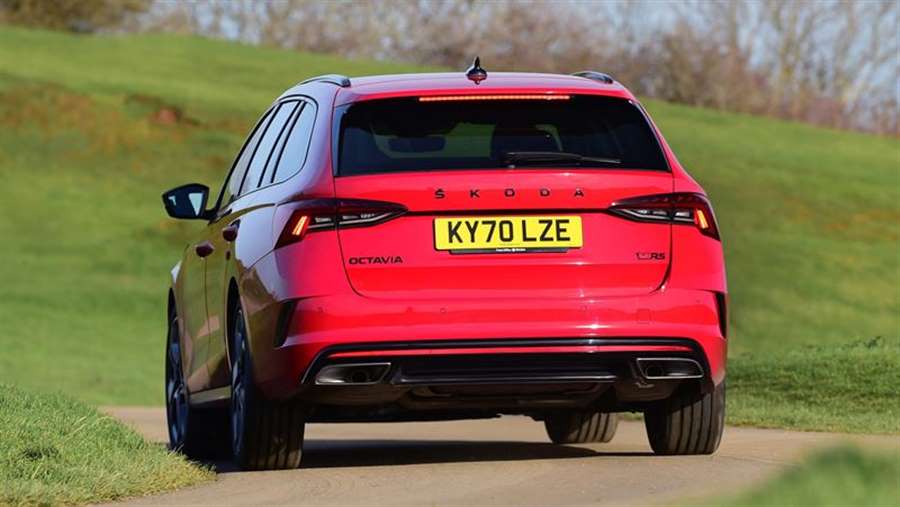
When running in hybrid mode on longer journeys, the car does a good job of stretching its battery life but you can expect it to be largely depleted after a few hundred miles. Equally, when running in pure-electric mode, if driven carefully, you can expect to have some charge remaining after around 25 miles.
With its turbocharged 2.0-litre petrol engine, the vRS manages significantly worse figures, returning up to 40.4mpg with its seven-speed DSG gearbox. Economy figures haven’t been finalised for the diesel version just yet but, given that the new car uses a similar engine to its predecessor, it’s highly unlikely the figures will be vastly different. Expect nearly 55mpg from the diesel, while CO2 emissions will put both in high Benefit-in-Kind tax brackets for business users, compared to the iV plug-in hybrid.
VED (car tax) costs £150 a year for the diesel and petrol, and cars costing more than £40,000 after options will incur an extra £325 surcharge until they’re six years old. The plug-in hybrid version will get a £10 annual discount. Skoda offers a pretty standard three-year/60,000-mile warranty, and you can buy service plans upfront or spread the cost out monthly.
Engines, drive & performance
Not the fastest, but the Skoda Octavia vRS estate offers decent performance
The big news for this latest Octavia vRS is the introduction of an iV plug-in hybrid. It’s the same system you’ll find in the Volkswagen Golf GTE, Skoda Superb iV and the Cupra Formentor SUV, so produces 242bhp and offers up a 7.3-second 0-62mph time. You might notice that’s a couple of seconds off some hot hatchbacks and estates, and the feeling of speed is blunted by the heavy battery. The last-gen vRS definitely feels that bit faster, even with the iV’s big torque reserve and a fake engine note pumped into the cabin.
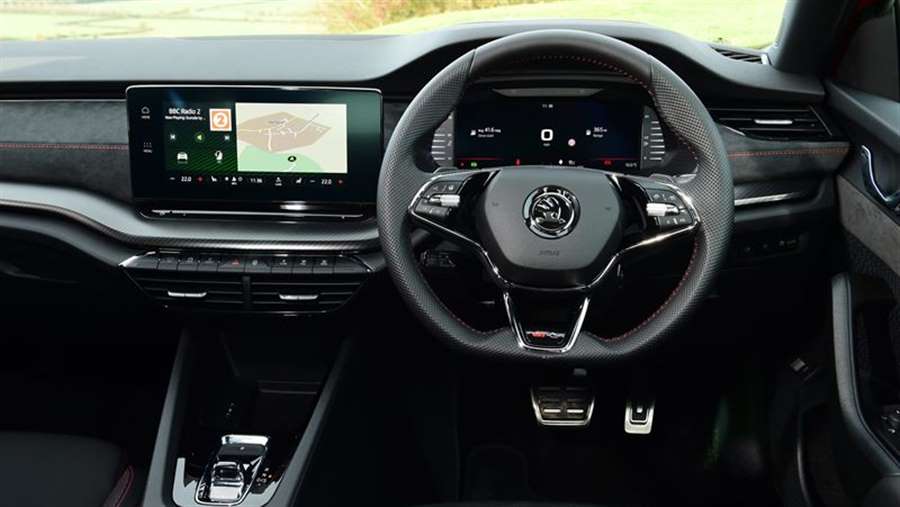
Weight distribution is further towards the rear with the battery underneath the boot floor, but there’s little to be gained from that as it feels like you reach the end of the car’s grip sooner. We suspect this isn’t helped by the tall ride height required by the battery (petrol and diesel models get lower suspension). That’s not to say you should immediately write off the plug-in hybrid; it’s the best choice if you want the sporty styling and will spend most of your time around town, which is where the vRS iV excels; the instant power of the electric motor and whisper-quiet running make it relaxing and refined. The transition from electric to petrol power is almost seamless, and you can choose how to use the powertrain - saving battery charge for later in the trip, for example.
Selecting Sport mode in the vRS iV highlights that the automatic gearbox can be rather sluggish; it feels like it holds the car back when you want to drive it more quickly. Using the steering-wheel mounted paddles to change gear yourself and force the car to hold on to gears for longer makes it very easy to spin the front wheels, thanks to the extra torque from the electric motor.
Gearbox aside, the Octavia vRS iV estate remains composed throughout faster corners thanks to stiffer suspension. The steering also provides a sharp and positive feel, giving you the confidence to accurately direct the car into corners.
The suspension may be stiff but it’s sophisticated enough that the vRS iV makes a very comfortable motorway cruiser, with only the roar from the standard 19-inch alloy wheels noticeable inside at high speeds. The only inherent drawback of using a PHEV for longer journeys is the economy drop once the battery for the electric motor is depleted.
The petrol engine has already impressed us in the Volkswagen Golf GTI. It has 242bhp, like the iV, but a quicker 0-62mph time of 6.7 seconds - and in the GTI it’s been tuned to feel more keen to rev to the limiter. For now, the fastest family estate in this price range is the Ford Focus ST, with its power advantage and 5.8-second 0-62mph time. Start the petrol powered vRS and the lack of drama is a bit disappointing - there's little to distinguish it from a regular 1.5-litre TSI, emitting a distant drone as you pick up speed.
On twisty roads there's a reasonable amount of punch out of corners, but the DSG automatic gearbox is keen to shift up relatively quickly, making the vRS feel swift and mature rather than blazingly fast. The steering is direct and a limited-slip differential helps the front tyres find grip in corners, but bumpy roads and sudden direction changes can unsettle the chassis and the Ford Focus ST Estate and Golf GTI are both more exciting to drive.
A six-speed manual or a seven-speed automatic gearbox are offered on the Octavia vRS, while the 197bhp diesel only comes with the latter - but you can add all-wheel drive. The diesel is likely to complete 0-62mph in around 7.4 seconds because it’s a little more powerful than the last car.
Interior & comfort
All the good bits of the standard Octavia with extra sportiness
Inside, the new Octavia vRS looks more futuristic than the car it replaces, thanks to a sleek two-spoke steering wheel and a large floating touchscreen. You do have to access the climate control through the screen but Skoda has provided a place to rest your wrist on the full-width trim piece intersecting the dashboard. The vRS-specific touches include a flat-bottomed wheel, red ambient lighting and sports seats, and it looks a little more restrained than the Ford Focus ST estate.
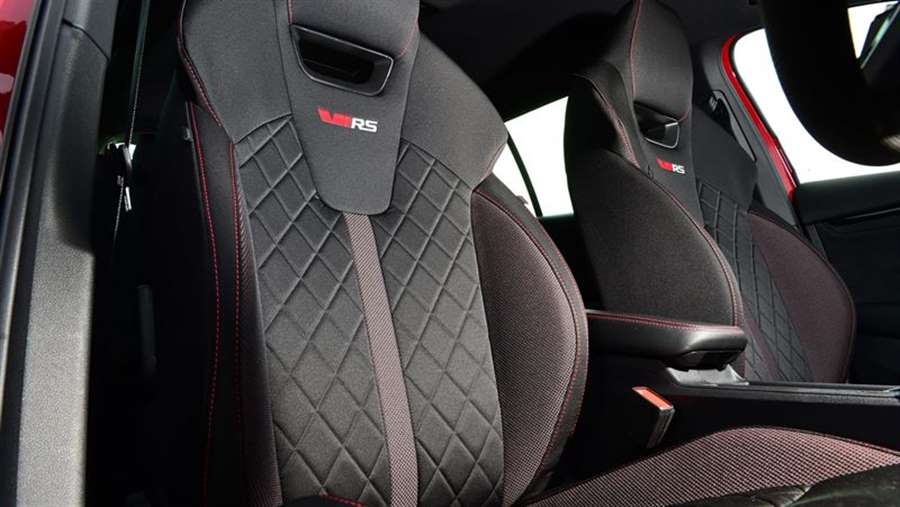
The vRS will come with a Virtual Cockpit digital instrument display, Matrix LED headlights, sat nav and multi-zone climate control. There's also a diamond stitching pattern for the seats with integrated headrests. Options will include extra driver assistance technology, bigger wheels and a couple of equipment packs. It's also possible to add a Canton premium stereo system with 12 speakers, adjustable suspension, a panoramic sunroof, a head-up display and an electrically powered tailgate.
Practicality & boot space
Space and pace; the Skoda Octavia vRS estate offers a vast boot and lots of passenger room
Skoda didn’t need to make the Octavia’s boot any bigger - it was already class-leading - but the new car is even more cavernous. The boot capacity isn’t affected in the petrol and diesel vRS models, so you get 640 litres to fill. That’s the same as the Mercedes E-Class estate, which is class-leading itself and a bigger car than the Octavia.
Skoda Octavia vRS Estate boot20
The Octavia vRS iV plug-in hybrid doesn’t have so much to boast about, as the positioning of the batteries means you lose some of that huge boot. It shrinks by 150 litres; 490 litres doesn’t sound so impressive but it’s still roughly the same as you get in the BMW 3 Series Touring. It does however feature clever underfloor storage for the charging cables and means the vRS iV estate gets a completely flat load area.
At least there’s room for your passengers to stretch out, regardless of the engine you pick. Unlike most estates this size, the Octavia allows three adults to sit side-by-side across the back row. There are an array of storage areas, plus Skoda’s Simply Clever touches like a parking ticket holder and an integrated ice scraper.
Reliability & safety
Skoda has achieved the best customer satisfaction in the VW Group
It’s almost hard to believe that Skodas were mocked just a couple of decades ago; now, they’re customer favourites and consistently score highly in our Driver Power owner satisfaction survey. In 2020, the brand finished in fifth place out of 30 manufacturers, with build quality, practicality and infotainment all praised. The previous-generation Octavia finished 34th in the list of the top 100 cars on sale, and we’d expect the new car to build on that.
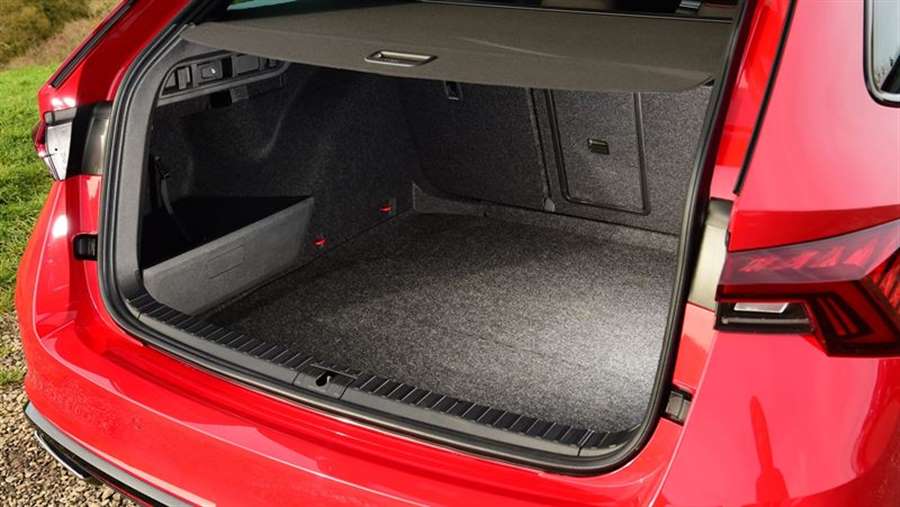
We’ll be shocked if the new Octavia scores anything less than a five-star Euro NCAP safety rating; the VW Group’s family cars all get positive scores in crash tests. Safety systems are extensive, with collision avoidance assistance, an exit warning system and lane-departure warning. You can add even more kit to the options list.
Source: carbuyer.co.uk
2021 Porsche Panamera Turbo S E-Hybrid Sport Turismo: Turbo Juiced to 690 Horspower
Highlighted by the Sport Turismo wagon model, Porsche's updated Panamera Turbo S E-Hybrid gains power, refinement, and 30 percent more electric range.
Recent headlines regarding Porsche's four-door cars have naturally gravitated to the company's new Taycan electric sedan. And given the performance of the 750-hp Taycan Turbo S—the most powerful Porsche currently available—that hype is understandable. But Porsche has partially electrified its Panamera sedan and Sport Turismo wagon (and Cayenne SUV) for several years now with some spectacular results. For the 2021 model year, a range of updates comes to the second-generation Panamera lineup, with the most anticipated of those changes being an uptick in power, performance, and refinement for the range-topping Turbo S E-Hybrid models.
Although the Panamera Sport Turismo has been around since 2018, the wagon remains a rare bird, even in car-crazy Los Angeles. Our 2021 Turbo S E-Hybrid test car has been collecting lustful stares all morning, even from a few Tesla drivers. Exterior changes are subtle. Aside from new wheel designs, the previously optional SportDesign front fascia is now standard; a reconfigured SportDesign package, with or without carbon fiber, is in the works. To bring the car's rear end in line with the look of the brand's fresher sports cars and SUVs, a continuous light strip now spreads across its tail. The only upgrade inside is a new steering wheel with simplified audio and information controls. Our German-spec example was not fitted with a panoramic glass roof, but it will remain standard on United States models.
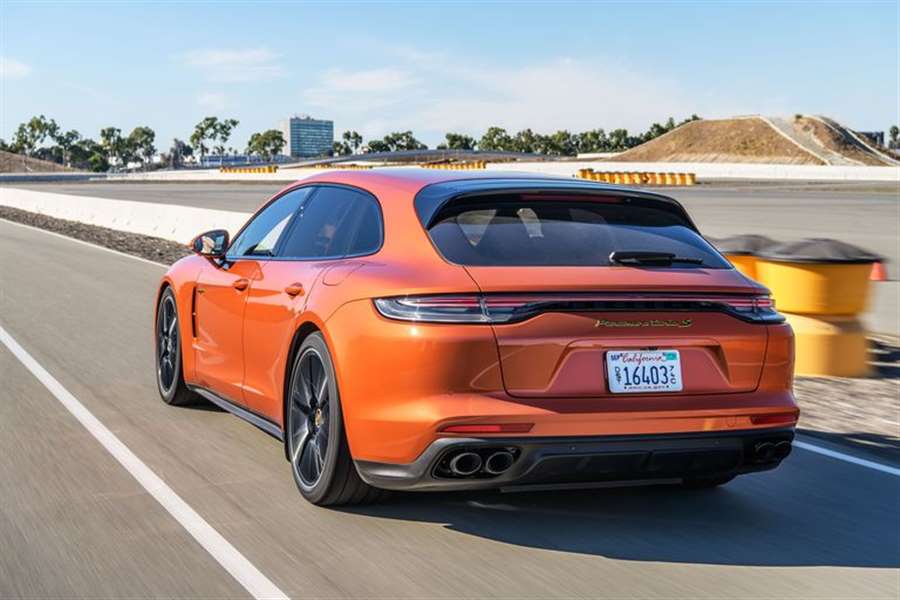
Mechanically, things haven't changed much either. The plug-in Turbo S E-Hybrid retains its all-wheel-drive system, twin-turbo 4.0-liter V-8, and an electric motor integrated into its eight-speed dual-clutch PDK automatic transmission. Engine calibration enhancements have increased the V-8's output from 550 horsepower to 563. Peak torque stays at 567 pound-feet, and the electric motor contributes an additional 134 horsepower and 195 pound-feet. As a result, combined horsepower climbs from 680 to 690. And with 642 pound-feet of total torque plus a low 5.97:1 first gear, hard launches strain back muscles and rearrange bodily fluids more than ever. Tummies twizzle.
Porsche says the updates shorten the wagon's 60-mph dash from 3.2 seconds to 3.0 flat, but we've already clocked a 2.7-second run from a 2018 Turbo S E-Hybrid Sport Turismo, which also covered the quarter-mile in 11.0 seconds at 126 mph. We won't know for sure until we get the updated car to the test track, but the 2021 model should shave a tenth of a second from those times. Porsche also claims a 196-mph top speed, which is an increase of 4 mph. We'll buy it.
The most significant powertrain upgrade is an increase in battery capacity from 14.1 kWh to 17.9 kWh, which ups the Turbo S E-Hybrid's all-electric driving range by 30 percent. On a full charge in the E-Power driving mode, there are now enough electrons for about 20 miles of travel. But get aggressive with the throttle, and the V-8 fires up quickly to deliver a boost of power.
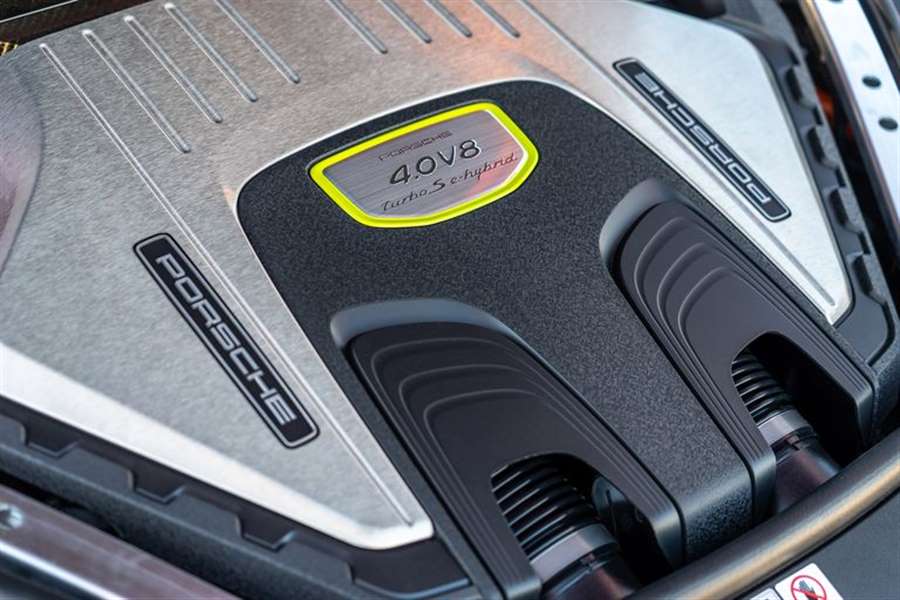
Hybrid mode maximizes the system's efficiency by blending both power sources with remarkable refinement, running the engine only when necessary to either charge the battery or answer your request for harder acceleration. "We spent a lot of time under the hood optimizing engine and suspension systems to enhance the bandwidth between performance and comfort," said Thomas Friemuth, vice president of the Panamera model line. EPA fuel-economy estimates aren't finalized yet, but the current car's 48-MPGe and 20-mpg combined ratings aren't expected to change.
Sport and Sport Plus modes keep the engine running and retune the transmission for more immediate response. They also dial up the volume of the active exhaust system, giving the V-8 a thumpy idle and a pleasant growl. The Turbo S E-Hybrid's adjustable air springs use the same hardware as before, but ride quality has been improved, and the range between the suspension's three settings have been broadened. Normal is a bit softer than before and Sport Plus a bit stiffer, but each setup retains the relatively supple ride quality and excellent body control that we've previously been impressed with.
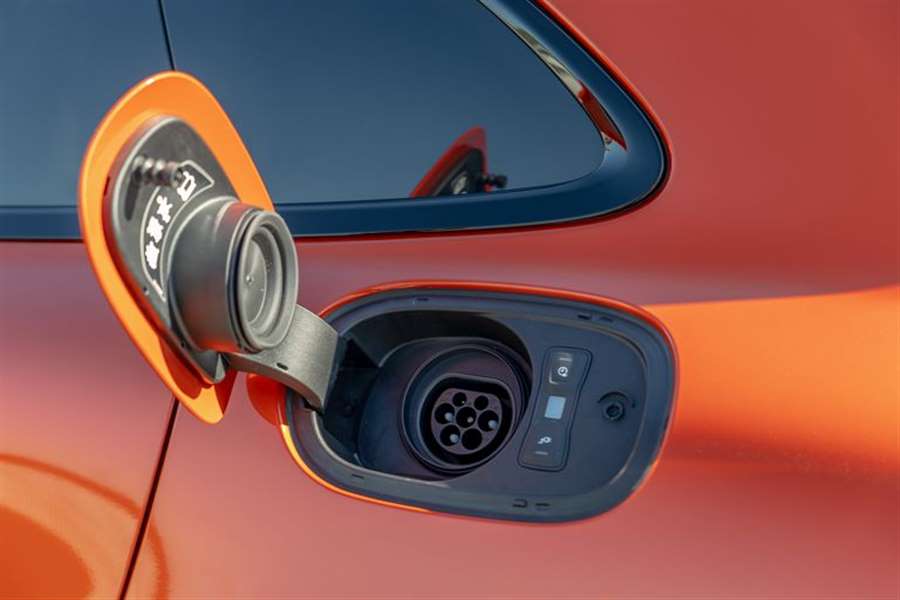
The Turbo S E-Hybrid's regenerative braking system helps replenish the battery pack rather quickly. A half hour of moderately quick driving in the hills above Malibu increased our indicated electric range from 7 to 21 miles. Porsche has also made some adjustments to the Panamera's Porsche Dynamic Chassis Control Sport system, which governs the car's active anti-roll bars, torque-vectoring system, rear-axle steering, and more. There's more steering feel than in other big sedans and wagons, and a new electromechanical brake booster seems to have eliminated the brake pedal's previously squishy transition from regenerative to friction braking. Massive carbon-ceramic rotors with Acid Green-painted calipers are still standard.
Porsche continues to mount the battery pack under the Turbo S E-Hybrid's cargo floor to help balance the weight of the chassis, which helps lend the car incredible grip and agility. You can notice some road noise from the updated 21-inch Michelin Pilot Sport 4 S summer tires (275/35R-21s in front and 325/30R-21s in the rear), but their impressive grip is a fair tradeoff. Despite weighing around 5300 pounds, we recorded 0.99 g of stick on the skidpad from the previous version of this electrified wagon. While it does feel big and heavy on the road, it's also seriously quick, stupendously stable, and it simply explodes from corner to corner.
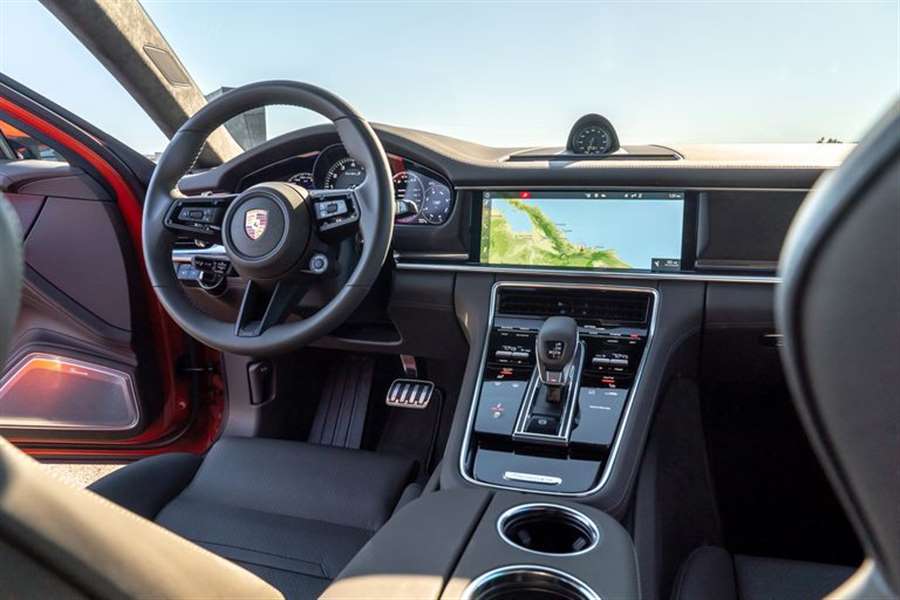
Pricing for Turbo S E-Hybrid versions of the Panamera and Panamera Sport Turismo will be released closer to the cars' availability in spring, but we'd expect slight increases over their current base prices of $189,050 and $193,050, respectively. With its improved performance and additional refinement, we could make a case for the top Sport Turismo model as Porsche's best all-around car. Sure, both the electric Taycan Turbo S and the updated 911 Turbo S are quicker, and we'd rather have one of the company's GT sports cars for pure driving joy. But none of them combines speed, comfort, efficiency, and versatility as stupefyingly well as the Panamera Turbo S E-Hybrid Sport Turismo. It may be the perfect ride for the deep-pocketed enthusiast with a family and a single parking space.
Source: carandriver.com
2021 Ford Bronco Sport Review: Who Ordered the Budget Land Rover?
The verdict: This Ford’s combination of on-road manners, genuine off-road ability, slick interior designs and rugged good looks make it a Land Rover for budget-minded buyers.
Versus the competition: The only compact SUV that comes close to what the Bronco Sport can do is the “trail-rated” Jeep Cherokee Trailhawk, and even then, the Bronco costs less. Other compact SUVs might have more interior room, but they’re really meant only for on-road driving, not cross-country adventures like the Bronco Sport.
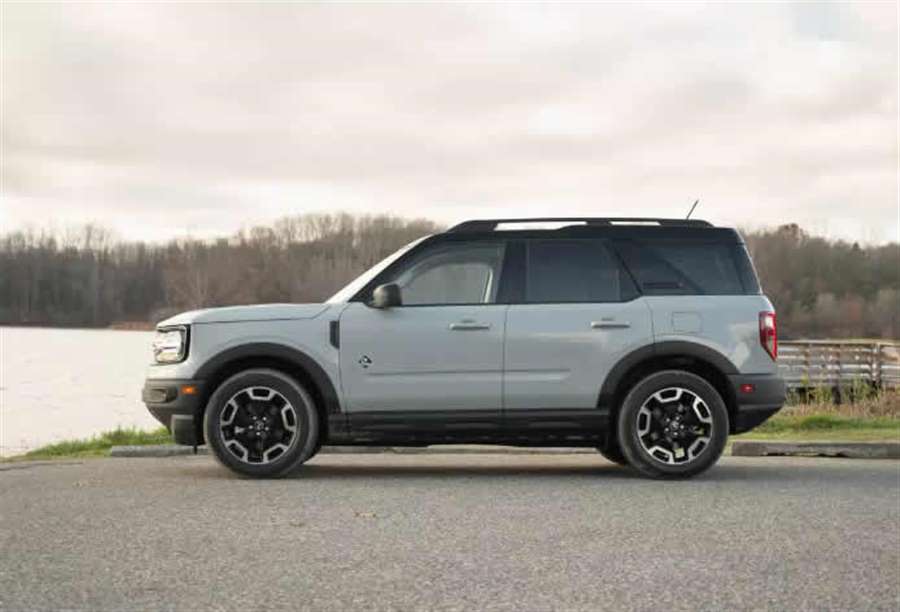
Yes, I know, we’re all very excited for the arrival of the 2021 Ford Bronco, and everyone’s just abuzz about it: How well does it go off-road? Is it better than a Wrangler? Is the top easy to take down? How heavy are the removable doors? And so on. But what we should keep in mind is that Ford introduced not one but two SUVs under the Bronco name: the “big” Bronco and this one, the 2021 Ford Bronco Sport.
Here’s where the off-road purists start their lament: “Oh, that’s not a proper off-road vehicle,” they’ll say. “That’s just a Ford Escape with some off-road bits stapled to it.” And while that’s not entirely inaccurate, it’s also not the whole story. Ford has made a lot of hay about how the big Bronco is super-capable off-road, with tons of technology, best-in-class specs and some genuine trail cred. Then the company pasted that “Bronco” name onto the front of this smaller, compact SUV — and that should also tell you something about it.
The compact Bronco Sport does indeed share some of its hidden bits with the Escape (as well as the no-longer-sold-in-the-U.S. Focus sedan), but those are common structural parts no buyer will ever see, like the expensive-to-make firewall stamping and other underbody elements. The Bronco Sport is shorter than the Escape both in wheelbase and in overall length, sporting very different dimensions aimed at creating a highly capable off-road SUV meant to challenge the Jeep Cherokee. Along the way, Ford has thoroughly engineered the SUV to do things that will surprise a lot of off-road purists who think only a body-on-frame, super-lifted, rear-wheel-drive, truck-based monster can successfully conquer trails. After spending an afternoon in the Bronco Sport with free run over a challenging off-road park, I’m here to tell you it may be a better choice for an everyday off-roader than the big Bronco itself.
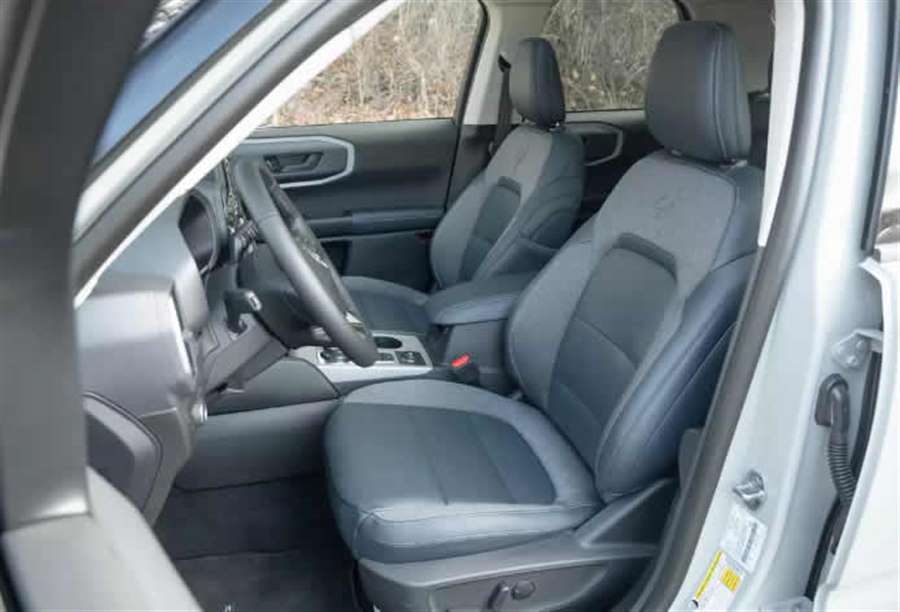
Let’s start with a quick discussion of the various types of Bronco Sport you can buy, as Ford has created five trim levels, each providing a different kind of experience. In order of increasing content, they are Base, Big Bend, Outer Banks, Badlands and First Edition.
The Base trim is exactly that: a no-frills compact SUV featuring everything you need for adventure, including a peppy turbocharged 1.5-liter three-cylinder engine cranking out 181 horsepower and 190 pounds-feet of torque. It’s mated to a standard eight-speed automatic transmission that sends power to all four wheels. It has all the basics, like an 8-inch display screen, 17-inch wheels, an electronic Terrain Management System with Ford’s “G.O.A.T. Modes” (stands for “Goes Over Any Type of Terrain”), Ford Co-Pilot360 safety systems and more. Choose the Big Bend model and you’ll get some additional content, including two-way manually folding rear seats, privacy glass, push-button start, rubberized cargo floors and some other nice-to-have bits and pieces. The Outer Banks model is meant to be the nicer “luxury” version, with a leather interior, power seats, a digital gauge cluster and bigger 18-inch wheels. In “Jeep-speak,” you’d call this one the Sahara trim.
Then we get to the top off-road model, the Badlands. It swaps out the turbo 1.5-liter engine for a 2.0-liter one that makes 250 hp and 277 pounds-feet of torque. It gets a 1-inch lift kit, a special off-road suspension, off-road tires, a more advanced four-wheel-drive system with a twin-clutch rear-drive differential, seven G.O.A.T. modes instead of five, underbody bash plates, tow hooks, a front trail camera and more. There’s also an even more exclusive First Edition model, but it’s already sold out, so I won’t bother with that one. Instead, let’s focus a lot of our attention on the Badlands model — which is deserving of that attention because it’s extraordinarily impressive.
Out On the Road
The first thing you’ll notice about the Bronco Sport if you drive any version of it is that it feels like a bigger SUV than it is. The hood feels almost horizontal, and it’s big, square and very traditional-feeling, creating a similar sensation to sitting in the bigger Bronco. It’s pleasingly boxy, helping you see the corners of the SUV — useful in off-road situations or parking lot maneuvers. That formidable hood is the only thing that feels big about the Bronco Sport, though, as the rest of its dynamics show it to be a nimble, tight-handling little SUV that’s as good to drive on the street as it is in the dirt.
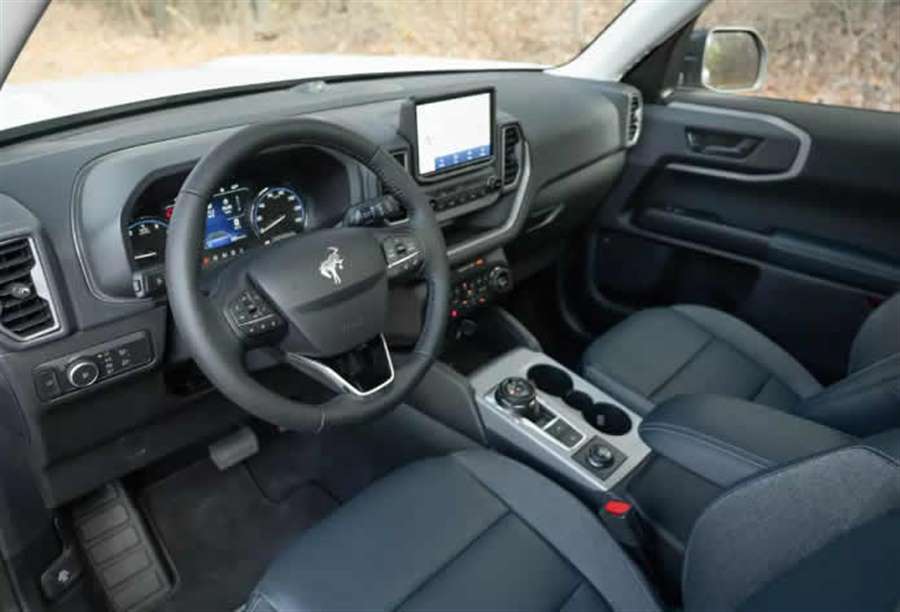
The turbocharged 1.5-liter engine that comes in the vast majority of Bronco Sports is torquey, peppy and has plenty of grunt for around-town driving. Slip the G.O.A.T. mode selector into Sport and it becomes truly quick, with the eight-speed automatic transmission keeping things on boil by maintaining a lower gear than it would in the normal driving mode. It does tend to run out of steam at higher speeds, however, so passing maneuvers on highways might require a little planning, but it never feels slow or ponderous in its operation; for the vast majority of users, it’s going to be plenty of motor. The optional turbo 2.0-liter engine takes things to the next level: Available only in the top Badlands and sold-out First Edition trim levels, you’ll pay for the privilege of extra power, but it does show noticeably better performance on acceleration. Honestly, though, I’d be perfectly happy with the 1.5-liter engine; the 2.0-liter seems more like a perk than a benefit.
The Bronco Sport handles well, too — despite fairly highly boosted steering feel — and definitely features some different characteristics depending on which trim level you choose. Lesser trim levels with their all-terrain tires feel a bit tighter, while the Badlands and its softer, lifted suspension and dedicated off-road tires feels a bit floatier. The Badlands is also a bit louder since its knobbier tires send more road noise into the cabin; given the Bronco Sport’s off-road intentions, though, this is neither unexpected nor unwelcome. The overall on-road driving experience is impressive, combining carlike handling with easy operation, a tall driving position, excellent outward visibility and the traditional crossover characteristics that have made the body style so popular.
Deep in the Woods
The purpose of a Bronco Sport is not commuting; for that, Ford has the perfectly capable Escape. The Bronco Sport’s on-road civility means you can commute in it just fine, but it has the equipment, technology and engineering to be a highly capable off-road machine. Ford likes to bill the Bronco Sport as having a different mission than the big Bronco. The Sport is for getting you to basecamp with all your stuff so you can do whatever you came to do, whether hiking or kayaking or mountain biking. The big Bronco is meant to go further — to be the very reason you’re out in the wilderness, the activity you went off-road for. If that’s the case, though, Ford has made the Bronco Sport far more capable than it needs to be.
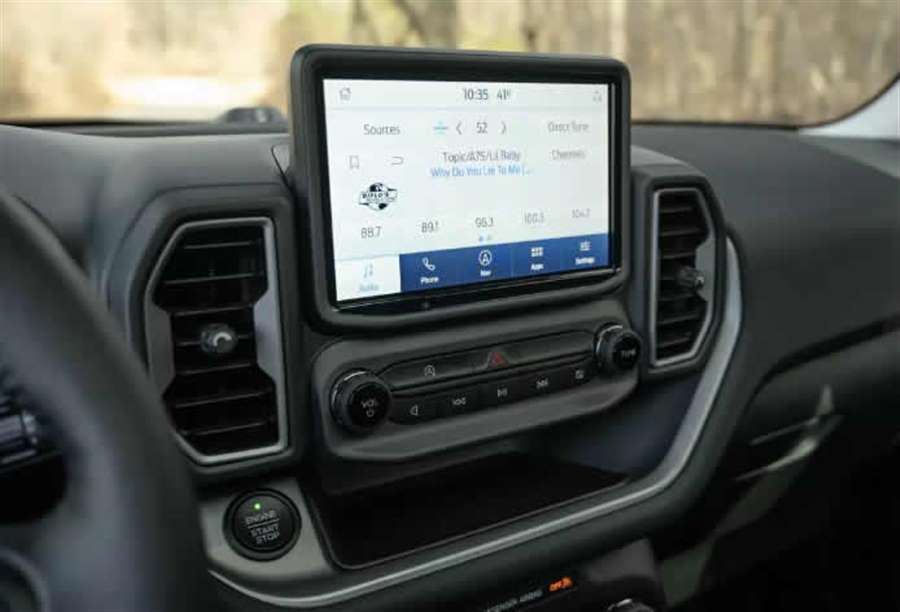
My afternoon with a Bronco Sport at the Holly Oaks Off-Road Vehicle Park in Southeast Michigan saw me take a Badlands over slippery rock faces, through high-speed sand pits, around tight wooded trails and down steep declines, all meant to be challenging for any SUV — and likely impossible for the vast majority of cute-ute crossovers. The Bronco Sport not only handled such obstacles with ease, it did so with a level of comfort that was absent in my previous ride-along in a big Bronco. Given its smaller dimensions that make it easier to shepherd through tight trails, one wonders if the Bronco Sport isn’t the better choice for a “casual” off-road adventurer, leaving the more expensive, heavier big Bronco for those who want the most hardcore experience they could have.
Ford makes it easy to take the Bronco Sport into the muck thanks to the use of its G.O.A.T. modes. The Badlands has seven of them, adding Mud/Ruts and Rock Crawl to the standard five of Normal, Eco, Sport, Slippery and Sand. You can lock the four-wheel drive yourself, but switching into the mode that matches your environment will do that for you as needed, along with making adjustments to things like electronic steering feedback, throttle input, transmission shift points, traction control and more.
This is where the budget Land Rover comparisons come in. The system feels similar to how the latest British-brand luxury SUVs handle a lot of their off-road duties. The Bronco Sport will match a lot of the abilities of a vehicle like a Land Rover Discovery Sport, and it comes with the added perk of a slew of more than 100 factory-approved accessories, ranging from lights to racks to rooftop tents that can be ordered along with the SUV at the point of purchase. Using their Terrain Response system, Land Rovers adjust a lot of the same systems Ford does with its G.O.A.T. modes, allowing for a multiple-personality SUV that’s perfectly comfortable on-road and perfectly capable off-road. Simply drive off the pavement, switch into the mode that best describes what you’re about to drive over, and away you go — no fuss, no muss. It works exceptionally well and will allow a lot of less experienced off-roaders to do things that require a bit of training in, say, a Jeep Wrangler, in which you need to know how to adjust most systems and equipment yourself. To Jeep’s credit, the Cherokee has a similar system that also adjusts various vehicle systems to the conditions; a full-on matchup between the Bronco Sport and Jeep Cherokee is an absolute must, and soon.
Getting There Is Half the Fun (Possibly Three-Quarters of It)
In addition to crafting a massively capable budget Land Rover out of a Ford Escape, the Blue Oval has also added a considerable dash of style and utility to the interior. The Bronco Sport’s interior is completely different from the Escape’s, with a more industrial, rugged look to the shapes and surfaces that’s entirely in keeping with its family lineage to the Bronco line. There’s even an available rubberized floor covering in case you want something that’s easy to wipe out. It’s also notable that Ford has introduced to the Bronco Sport interior color that’s missing from a lot of SUVs these days — shades of blue, bronze, silver and orange that are all a welcome departure from the dull greige in a lot of competitor vehicles.
While the interior is good, it’s also not perfect. As is the case with a lot of Fords, the seats feel smaller than they should be and are shaped in uncomfortable ways. The Badlands model’s optional leather-covered chairs had bottom cushions with an odd dome that made me feel like I was sitting on an exercise ball. The backseat is not terribly generous in the legroom department — likely a function of losing some wheelbase versus the Escape. Headroom isn’t an issue thanks to the Bronco Sport’s safari-style roof and upright, boxy styling. The cargo area looks plentiful, but Ford has not yet published dimensions for the Bronco Sport, so comparisons with other compact SUVs are difficult at this time. Of note here is the standard flip-up glass rear window, which is a feature you don’t often see anymore but which is useful for just popping something into the cargo area without having to open the entire hatch (and maybe having things spill out).
On the technology front, the Bronco Sport has all the modern amenities and safety conveniences you might expect from a new Ford, plus maybe one or two tech bits that seem a little odd. First, Ford Co-Pilot360 is standard, bringing things like automatic emergency braking with pedestrian detection, forward collision warning, blind spot warning, rear cross-traffic alert, lane keep assist, auto high beams and a backup camera. Upgrade to Co-Pilot360 Plus and you’ll also get adaptive cruise control with lane-centering, evasive steering assist and more.
The multimedia system in the Bronco Sport is curiously not the latest Sync 4 system you can get in the new 2021 Ford F-150, but rather the older Sync 3 system that runs on an 8-inch touchscreen. It’s a little small in terms of display size — most new competitors have larger screens — but it’s as large and up-to-date as the system in the Escape. It also has something that Sync 4 doesn’t have: a “home” button, which we never thought we’d miss until Ford eliminated it in the F-150. The system still works fine, syncing up with a smartphone without issue, and provides Apple CarPlay or Android Auto in case you don’t want to use the native Ford systems.
Source: cars.com

